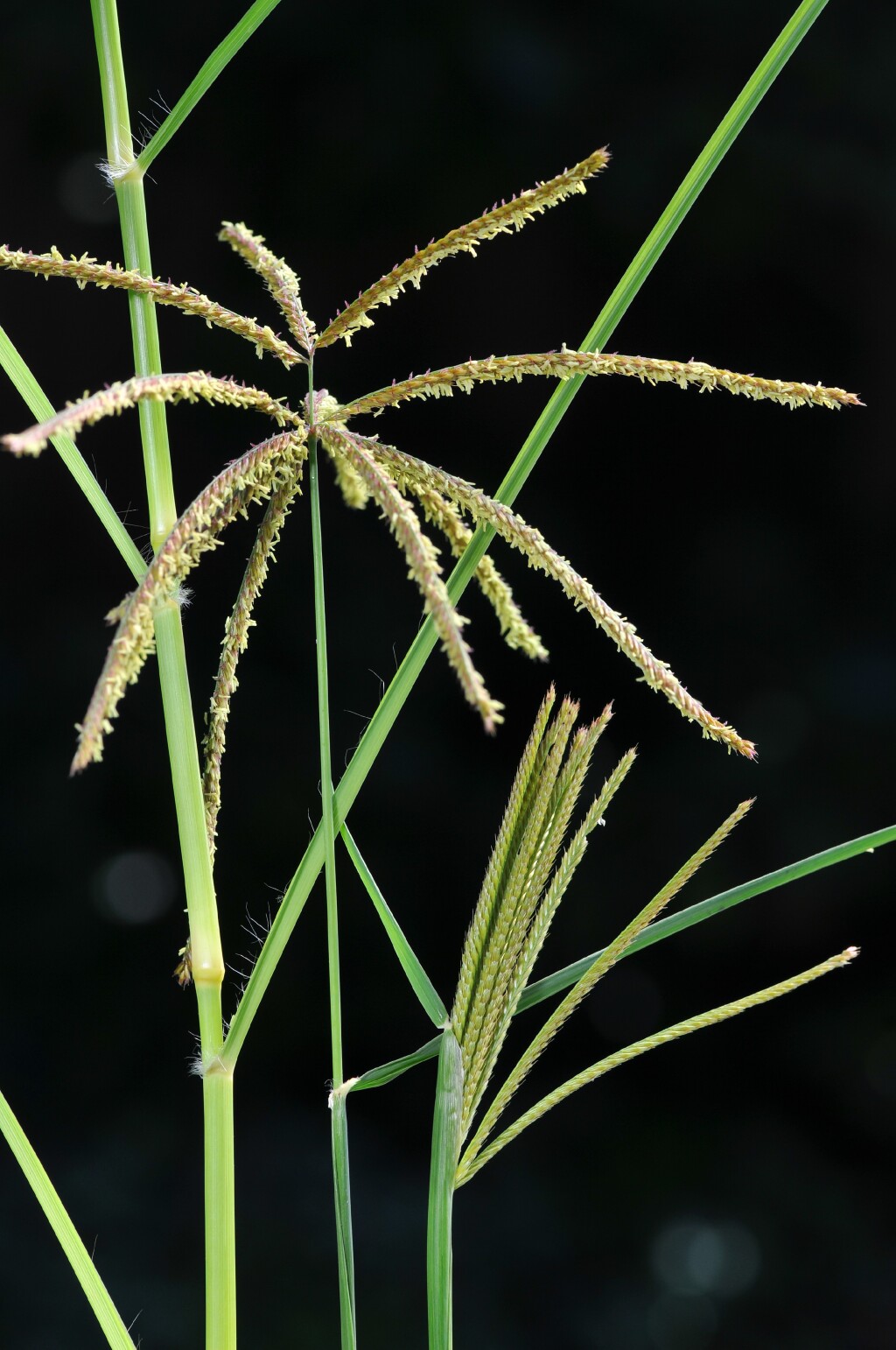Chloris gayana
Kunth Rhodes-grassStoloniferous perennial, culms erect, to 120 cm high. Leaves hairy about the ligule; blade finely scabrous, folded when young, flat when mature, narrowly tapered to apex, to 40 cm long and 10 mm wide. Inflorescence an umbel of 10–19 spikes, 7–11 cm long. Spikelets with 2–4 florets, the lowest bisexual, the second male and any others sterile; lower glume 1–2 mm, the upper shortly awned, 2.5–3.5 mm long in all; fertile lemma acute, c. 3 mm long, upper margin with a sparse tuft of hairs c. 1 mm long, awn 1–3 mm long; second lemma resembling first but smaller and glabrous; sterile lemma(s) truncate, awnless. Flowers Mar.–Jul.
MuM, VVP, VRiv, RobP, MuF, GipP, OtP, Gold, CVU, NIS, EGL, EGU, HSF. Naturalized in all mainland States. Native to southern Africa. Locally common in irrigated districts in the north-west, occasionally grown as a lawn or pasture species or appearing sporadically in other areas (e.g. Melbourne suburbs, Lindenow near Bairnsdale). .
Walsh, N.G. (1994). Poaceae. In: Walsh, N.G.; Entwisle, T.J., Flora of Victoria Vol. 2, Ferns and Allied Plants, Conifers and Monocotyledons, pp. 356–627. Inkata Press, Melbourne.
 Spinning
Spinning




